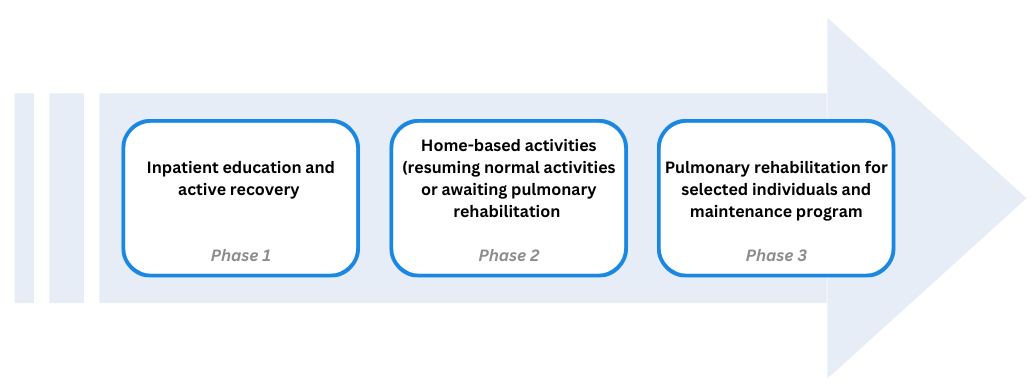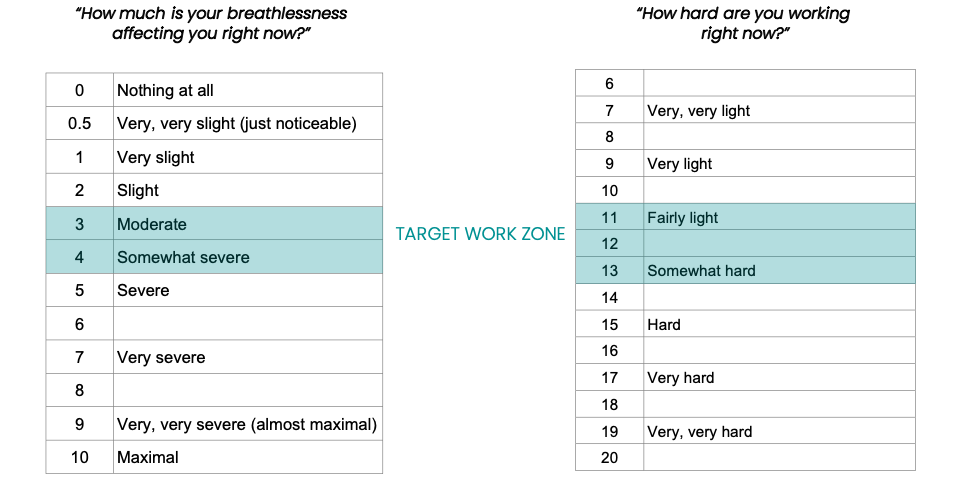EARLY RECOVERY
People affected by bronchiectasis flare-up may require support to transition back to a physically active lifestyle and re-engage in a regular physiotherapy routine. Part of your regular physiotherapy routine will be airway clearance therapy.
You will have been given a routine to follow for clearing your lung mucus while you are in hospital. This routine may be new to you, or may differ from what your usual routine is. Your physiotherapist should advise you of the requirements for follow-up regarding your airway clearance therapy prior to discharge.
This process ideally starts during the time of hospitalisation and continues after discharge.

Phase 1 usually involves regular short (or becoming longer) walks around the hospital ward, leg exercises (e.g. repeated sit-to-stands from a chair), education about breathing control and energy conservation strategies, and how to monitor how hard you are working. It should also include discussion about physical activity and possibly pulmonary rehabilitation options after discharge, if considered appropriate. This will be in addition to your airway clearance therapy to help you remove excess mucus or phlegm from your lungs.
Phase 2 may differ between people with bronchiectasis. For those referred to a pulmonary rehabilitation program, it represents the time between leaving hospital and starting a pulmonary rehabilitation program. Key goals of this phase include achieving a healthy amount of walking, recovering any lost muscle strength from the inactivity of hospitalisation, and restoring confidence to re-engage in usual community-based activities or hobbies. For those not planning to be engaging in a rehabilitation program, it involves a graduated increase in activity to resume levels similar to your baseline (or better) and choosing activities which you will enjoy and you can see yourself maintaining a regular engagement with.
Phase 3 involves undertaking pulmonary rehabilitation for those referred, which is a structured program of exercise and education. More information is provided on the pulmonary rehabilitation section of the website. Following the completion of pulmonary rehabilitation, individuals aim to maintain an active lifestyle and build on the benefits gained from pulmonary rehabilitation. For some, this may involve joining a maintenance program or gym as part of this goal.
Physical activity following hospital discharge
Although symptoms may have improved during a hospital admission, they are often still heightened from your baseline when you return home. It is anticipated that your tolerance of physical activity or exercise therefore will not be as great as they were prior to the flare-up.
It is worth being intentional about your physical function recovery by making an activity plan with your healthcare professional to follow when you return from hospital.
How much physical activity should you undertake?
As everyone’s needs and abilities differ, the precise amount of physical activity that you should undertake should be guided by your physiotherapist or appropriately qualified healthcare professional. One of the most important skills to develop is the ability to monitor how hard you feel you are working. Two common approaches are used for this purpose:
1. Rating how breathless you feel while completing activities via a breathlessness scale. This is most relevant for people who find breathlessness is the main factor limiting how much they can do;
2. Rating how hard you feel you are working via a rating of perceived exertion scale. This is relevant for anyone, but may be particularly useful for those who find breathlessness is not the main factor limiting how much they can do – some people find they are limited by leg fatigue/soreness or overall effort.
